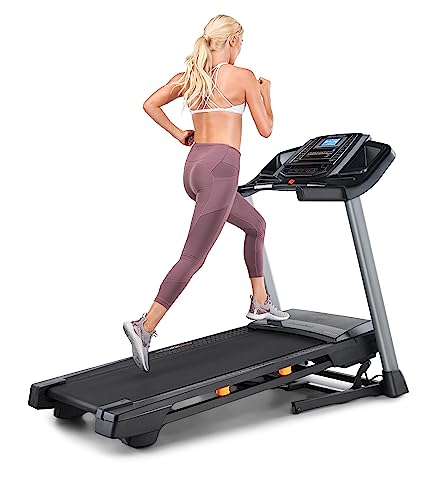Why Everyone Is Talking About Treadmill Without Electricity Right Now

The Allure of Treadmills Without Electricity: A Comprehensive Guide
In a world increasingly dominated by high-tech physical fitness gizmos, the simpleness and practicality of a treadmill that does not require electricity might seem like a throwback. Nevertheless, treadmills without electricity-- frequently described as "manual treadmills"-- have actually gotten considerable popularity among fitness lovers looking for a more uncomplicated, eco-friendly exercise option. This post looks into the myriad benefits, functions, and considerations surrounding manual treadmills, along with answering common questions from potential buyers.
What is a Manual Treadmil l?
A manual treadmill is a piece of exercise equipment that permits users to stroll or run without needing electrical power. As opposed to motorized treadmills that move the belt for you, manual treadmills rely on the user's own effort to propel the belt forward. Here's a fast contrast in between manual and motorized treadmills:
| Feature | Manual Treadmill | Motorized Treadmill |
|---|---|---|
| Power Source | None | Electricity needed |
| Personnel Mechanism | User-powered | Motor-driven |
| Expense | Typically more affordable | Typically more pricey |
| Mobility | Extremely portable | Often heavier, less portable |
| Upkeep | Low | Needs more maintenance |
| Exercise Intensity | Greater (more effort) | Can be adjusted |
Benefits of Using a Manual Treadmill
Economical:
- Manual treadmills are typically more affordable than their electrical equivalents. With a lower initial investment and no ongoing electricity costs, these treadmills can be an excellent choice for budget-conscious individuals.
Eco-Friendly:
- As there are no motors or electrical components involved, manual treadmills are a sustainable option. They do not take in nonrenewable fuel sources and leave a smaller carbon footprint.
Versatile Workout:
- Because they need the user to create their own momentum, manual treadmills can provide more intense exercises, ideal for those wanting to increase their endurance and strength.
Portability:
- Manual treadmills are often lighter and easier to transfer. They permit users to quickly save them away or move them from one area to another.
Decreased Risk of Injury:
- By permitting a more natural running movement, manual treadmills can help decrease the danger of injury compared to motorized choices. Users have control over their speed and can stop or decrease instantly.
Secret Features to Consider
When considering a manual treadmill, specific functions should be considered:
- Belt Quality: Look for a non-slip, long lasting surface area that offers sufficient grip for safety throughout workouts.
- Incline Levels: Many manual treadmills featured adjustable incline features. Greater inclines can increase exercise intensity.
- Measurements: Space can be a limitation, so taking a look at the treadmill's footprint is crucial.
- Weight Capacity: Always examine the maker's weight suggestions to guarantee security and durability.
- Show Monitor: Some manual treadmills include basic monitors for tracking elapsed time, distance, and calories burned.
| Feature | Description |
|---|---|
| Belt Quality | Non-slip and resilient materials for safety |
| Incline Levels | Adjustable settings for increased exercise difficulty |
| Measurements | Size and weight for ease of storage and transportation |
| Weight Capacity | Make sure the treadmill accommodates the user's weight easily |
| Display Monitor | Optional performance tracking features |
Picking the Right Manual Treadmill
Offered the range of manual treadmills readily available on the marketplace, picking the right one includes examining individual physical fitness goals and requirements. Here's a streamlined list to guide customers:
- Assess your fitness goals: Are you intending for weight reduction, endurance, or general fitness?
- Think about the available space: Ensure the treadmill will fit well in your designated exercise location.
- Check for functions: Look for adjustable incline settings or added innovation such as a range tracker.
- Research study brand names and evaluations: Read about the experiences of other users to evaluate the dependability and sturdiness of the design you're thinking about.
- Set a budget: Compare different models while keeping your spending plan in mind.
Frequently Asked Questions (FAQ)
1. Are manual treadmills ideal for all fitness levels?
Yes, manual treadmills cater to various physical fitness levels. Newbies can begin at a slower speed, while advanced users can increase intensity and speed.
2. How do manual treadmills affect calorie burn as compared to motorized ones?
Manual treadmills might lead to higher calorie burn throughout exercises, as users need to put in more effort to move the belt.
3. Do I require to assemble a manual treadmill?
A lot of manual treadmills come partly assembled, however you'll likely require to complete some assembly depending upon the model.
4. Can I perform interval training on a manual treadmill?
Definitely! Manual treadmills are excellent for interval training given that users can easily adjust their speed and start/stopping movements.
5. How do I maintain a manual treadmill?
Maintenance is simple: routine cleansing of the belt and frame, examining for wear and tear, and ensuring empty storage when not in usage.
Manual treadmills offer various advantages, making them an attractive choice for many fitness enthusiasts. Their energy-efficient design, integrated with the ability to supply reliable workouts, has cemented their place in home physical fitness regimens. With a clear understanding of their features and benefits, people can make an informed choice about whether a manual treadmill is the best option for their health journey.
The simple appeal of manual treadmills-- combined with their cost-effectiveness and sustainability-- ensures they stay appropriate in today's fitness market, supplying an engaging option to electric designs.

